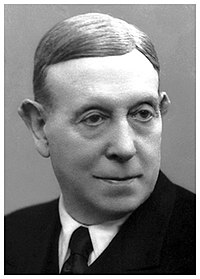Science and technology in Portugal
During the 16th century, in the Age of Discovery, a more mathematical educational approach flourished in this university with the creation of specialized courses and classes in the field.
This was a new post in the University of Coimbra and it was established to provide instruction in the technical requirements for navigation: clearly a topic of great importance in Portugal at this period, when control of sea trade was the primary source of Portuguese wealth.
By the 18th century, under the enlightened political leadership of the Marquis of Pombal, the University of Coimbra was modernized with the appointment of new professors, both Portuguese and foreigners, and the establishment of several facilities directed towards the teaching of the natural sciences.
In 1949, the Portuguese neurologist António Egas Moniz, an early developer of the cerebral angiography, was awarded the Nobel Prize in Medicine.
In November 19, 2005, the International Iberian Nanotechnology Laboratory to be built in Braga, was announced by the head of Government of Spain and the Prime Minister of Portugal at the end of the XXI Portugal-Spain Summit that took place in Évora.
[2] Several other scientific fields are covered by specialized research organizations which are noted for their role as technology business incubators, like the International Iberian Nanotechnology Laboratory, the Instituto Pedro Nunes and Taguspark, a science park.
A number of both national and multinational high-tech and industrial companies present in Portugal, are also responsible for research and development projects in different fields.
Positive growth is observed for most indicators, and in particular for business R&D expenditure, PCT patent applications in societal challenges and community designs.
[2] Notable organizations focused on science-related exhibits and divulgation, include the state agency Ciência Viva, a programme of the Portuguese Ministry of Science and Technology to the promotion of a scientific and technological culture among the Portuguese population,[9] the Science Museum of the University of Coimbra, the Museum of Natural History at the University of Lisbon, the Visionarium and the Lisbon Oceanarium.
Companies locate in the Portuguese science parks to take advantage of a variety of services ranging from financial and legal advice through to marketing and technological support.
Some examples of notable Portuguese people who had made important contributions to science and technology, becoming in their time internationally known within their respective field, include:








